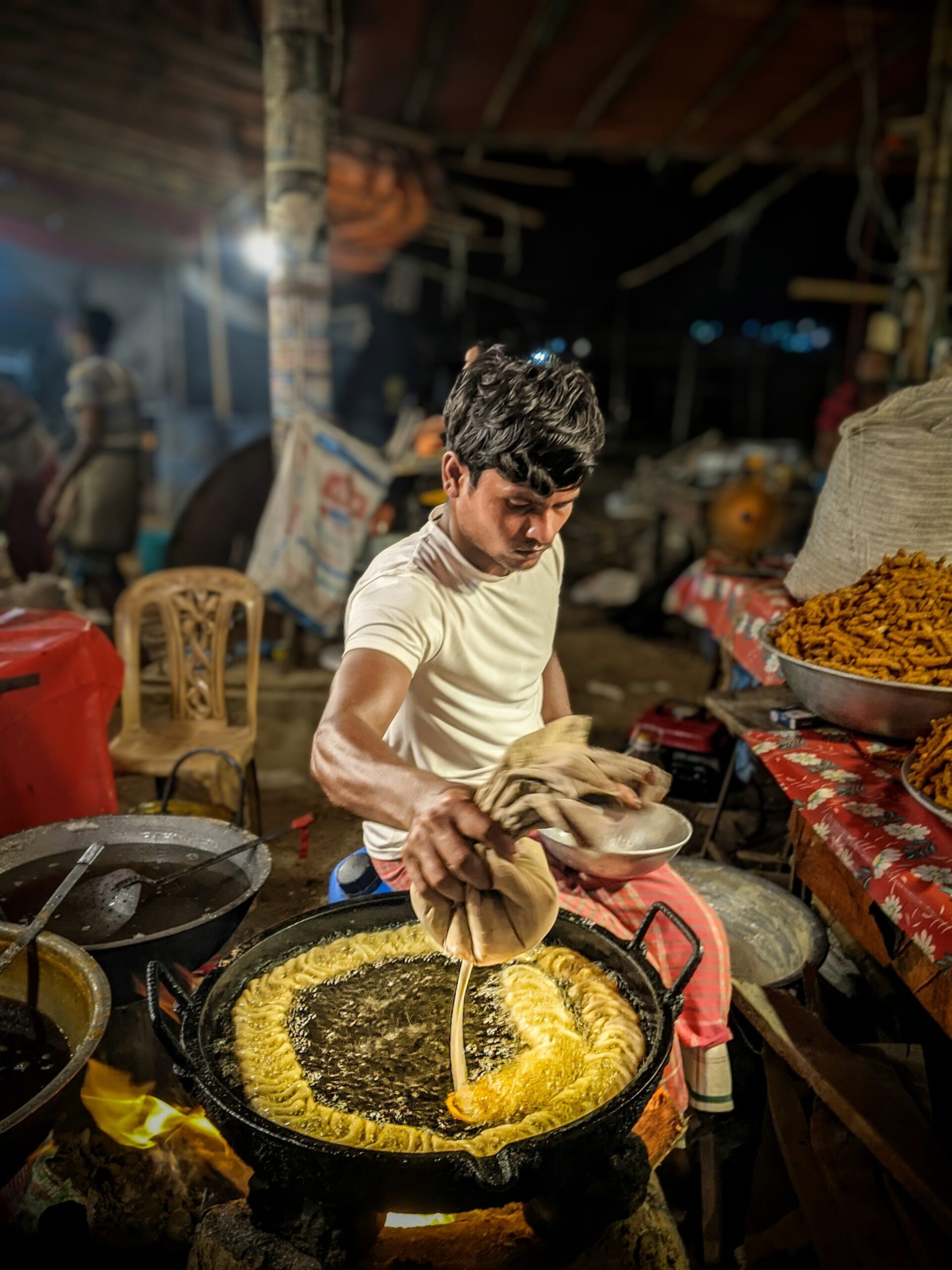In the fascinating world of literature, the influence of Indian writing on global fantasy fiction stands as an awe-inspiring phenomenon. India, known for its linguistic richness and cultural heritage, has contributed immensely to the genre through its classical epics, Sanskrit language, and contemporary authors. As we delve into the depths of Indian literature, we uncover a tapestry of imagination and enchantment that has captivated readers across the globe. From the timeless tales of ancient gods and heroic warriors to the magnificence of contemporary storytelling, the influence of Indian literature on global fantasy fiction is a testament to the indelible mark it has left on the genre. Get ready to embark on a journey that will transport you into realms where imagination knows no bounds.

Introduction
Welcome to our comprehensive article on the influence of Indian literature on global fantasy fiction. India has a rich literary heritage that spans centuries and has made significant contributions to the fantasy genre. From ancient Sanskrit literature to contemporary authors, Indian literature has captivated readers around the world with its magical tales, mythical creatures, and profound philosophical teachings. In this article, we will explore the various aspects of Indian literature that have left an indelible mark on global fantasy fiction.
Sanskrit Literature
Sanskrit literature forms the foundation of Indian literary tradition and has had a profound influence on global fantasy fiction. Two of the most important works in Sanskrit literature are the Vedas and Upanishads. The Vedas are a collection of ancient scriptures that contain hymns, prayers, rituals, and philosophical teachings. The Upanishads, on the other hand, delve deeper into the philosophical aspects of life, discussing concepts such as the nature of reality, the soul, and the pursuit of self-realization. These ancient texts often incorporate mythological elements, fantastical creatures, and supernatural events, providing a rich source of inspiration for fantasy fiction writers.
Vedas and Upanishads
The Vedas and Upanishads are not traditional fantasy stories in the modern sense, but they contain elements that have contributed to the development of the fantasy genre. The Vedas often mention gods, goddesses, and mythical creatures like Gandharvas and Apsaras. The Upanishads explore philosophical concepts through allegories and metaphors, sometimes using supernatural beings to convey deeper meanings. These texts have inspired many fantasy authors to create imaginative worlds filled with gods, magical beings, and epic quests.
Ramayana and Mahabharata
The Ramayana and Mahabharata are two of the most important Sanskrit epics that have shaped Indian literature and influenced global fantasy fiction. The Ramayana tells the story of Prince Rama’s journey to rescue his wife Sita from the demon king Ravana. It is filled with heroic battles, mythical creatures like the monkey god Hanuman, and magical weapons like Rama’s bow and arrow. The Mahabharata, on the other hand, is an epic tale of a great war between two families, the Pandavas and the Kauravas. It features larger-than-life characters, divine interventions, and the famous dialogue of the Bhagavad Gita. These epic narratives have inspired countless fantasy authors to create their own epic tales with grand battles and mythological elements.
Panchatantra
The Panchatantra is a collection of ancient Indian fables that has been widely translated and adapted around the world. Written in Sanskrit, it consists of a series of animal stories that impart moral and practical wisdom. Each story features anthropomorphic animals who talk and interact with each other, teaching readers valuable life lessons through their adventures. The Panchatantra has had a significant influence on global fantasy fiction, particularly in the portrayal of talking animals and the use of animal symbolism to convey moral messages.

Classical Epics
Indian classical epics are a treasure trove of fantastical tales, heroic feats, and profound wisdom. These epics have become an integral part of global fantasy fiction, inspiring authors to create their own epic narratives and explore themes of heroism, destiny, and the eternal struggle between good and evil.
The Ramayana
We have already discussed the influence of the Ramayana in the section on Sanskrit literature. This epic tale of Prince Rama’s journey to rescue his wife Sita from the demon king Ravana has captured the imagination of millions around the world. The Ramayana is renowned for its larger-than-life characters, magical creatures, epic battles, and timeless moral lessons. It has served as a blueprint for many fantasy stories, inspiring authors to create their own epic quests and heroic adventures.
The Mahabharata
The Mahabharata, as mentioned earlier, is another ancient Sanskrit epic that has left a lasting impression on global fantasy fiction. It tells the story of a great war between two families, the Pandavas and the Kauravas, and explores complex themes of duty, righteousness, and the consequences of actions. The Mahabharata is known for its diverse cast of characters, including gods, demigods, and magical weapons. It has provided a rich source of inspiration for fantasy authors looking to create intricate worlds, morally ambiguous characters, and epic conflicts.
Folktales and Mythology
Indian folklore and mythology are replete with captivating stories, mythical creatures, and moral teachings. These tales, often passed down through generations, have influenced global fantasy fiction by showcasing the power of storytelling, the symbolism of fantastical creatures, and the universality of human experiences.
Jataka Tales
The Jataka Tales are a collection of tales from the Buddhist tradition that recount the previous lives of the Buddha before his enlightenment. These tales often feature animals as central characters and convey moral lessons and Buddhist teachings. The Jataka Tales have had a significant impact on global fantasy fiction by popularizing the use of animal symbolism and personification to convey profound messages about morality, compassion, and the interconnectedness of all beings.
Puranas
The Puranas are a genre of ancient Hindu texts that contain mythological stories about gods, goddesses, and legendary figures. These texts serve as repositories of knowledge about Hindu mythology and have influenced global fantasy fiction by introducing readers to a vast pantheon of gods, supernatural beings, and epic narratives. The Puranas have inspired countless fantasy authors to create their own mythological worlds, populate them with divine characters, and explore the themes of power, love, and destiny.
Aesop’s Fables in India
While Aesop’s Fables originate from ancient Greece, they have found a home in India as well. These moral stories featuring anthropomorphic animals have been widely read and adapted in Indian literature, influencing the portrayal of talking animals and the use of fables to convey moral messages in global fantasy fiction. Aesop’s Fables have become a part of Indian literary tradition and have further enriched the treasure trove of tales and teachings that have shaped the fantasy genre worldwide.

Contemporary Authors
India’s literary landscape continues to thrive with the contributions of contemporary authors who have garnered international acclaim for their works. These authors bring their unique perspectives, storytelling styles, and themes to the realm of fantasy fiction, further diversifying and expanding the genre’s global reach.
R.K. Narayan
R.K. Narayan is considered one of India’s greatest English-language writers. His books, set in the fictional town of Malgudi, combine realism with elements of fantasy and humor. Narayan’s works, such as “The Guide” and “The Man-Eater of Malgudi,” capture the essence of Indian culture and mythology while exploring universal human experiences. His blend of magical realism and social commentary has had a profound influence on global fantasy fiction, inspiring authors to infuse their narratives with elements of both the real and the fantastical.
Sarojini Naidu
Sarojini Naidu, also known as the Nightingale of India, was a poet, writer, and politician. While primarily known for her poetry, Naidu’s collection of Indian folktales titled “The Golden Threshold” showcases her storytelling prowess and deep understanding of Indian mythology and folklore. Her imaginative retelling of age-old tales has inspired other fantasy authors to delve into their own cultural heritage and create unique narratives that draw upon the rich tapestry of Indian folklore.
Amish Tripathi
Amish Tripathi is a contemporary Indian author who has gained widespread recognition for his “Shiva Trilogy,” a series of fantasy novels that reimagines the story of Lord Shiva, one of the most revered deities in Hindu mythology. Tripathi’s novels, such as “The Immortals of Meluha,” blend historical fiction, mythology, and fantasy elements to create a captivating narrative that explores themes of destiny, love, and the balance between good and evil. His success has paved the way for more Indian authors to explore and reimagine their own mythological traditions in the realm of fantasy fiction.
Magical Realism
Magical realism is a genre of literature that combines realistic elements with magical, fantastical, or supernatural elements. Indian literature has made significant contributions to the realm of magical realism, with authors infusing their narratives with enchantment, mysticism, and philosophical insights.
Rabindranath Tagore’s Influence
Rabindranath Tagore, renowned Indian poet, philosopher, and Nobel laureate, is often considered the father of modern Indian literature. His works, such as “Gitanjali” and “The Home and the World,” embody the spirit of magical realism by blending realistic storytelling with poetic language and philosophical musings. Tagore’s exploration of the human experience, the intersection of the material and the spiritual, and the inherent mystery of life has influenced countless authors, both in India and abroad, to incorporate elements of magical realism into their works.
Salman Rushdie’s Works
Salman Rushdie, a British Indian author, is known for his bold and imaginative storytelling that combines magical realism with political and social commentary. His masterpiece, “Midnight’s Children,” weaves together historical events, elements of fantasy, and the supernatural to create a rich tapestry of India’s post-independence era. Rushdie’s novels have pushed the boundaries of the fantasy genre, inspiring authors to explore themes of identity, history, and the power of storytelling through the lens of magical realism.
Vikram Chandra’s “Red Earth and Pouring Rain”
Vikram Chandra’s “Red Earth and Pouring Rain” is a modern Indian masterpiece that seamlessly merges myth, history, and contemporary reality. The novel follows the journey of a monkey who narrates his past lives as different characters, exploring themes of identity, storytelling, and the interconnectedness of all beings. Chandra’s imaginative and lyrical prose, along with his incorporation of Indian mythology and folklore, have made “Red Earth and Pouring Rain” a significant contribution to the genre of magical realism.
Spirituality and Philosophy
Indian literature has always been deeply rooted in spirituality and philosophy, exploring existential questions, the nature of reality, and the pursuit of self-realization. These profound themes have found their way into global fantasy fiction, inspiring authors to delve into the metaphysical realms and explore the deeper meanings of life.
Bhagavad Gita
The Bhagavad Gita, a 700-verse sacred text from the ancient Indian epic, the Mahabharata, is a philosophical dialogue between Prince Arjuna and the god Krishna. It delves into profound concepts such as duty, morality, and the nature of the self. The Bhagavad Gita’s teachings on self-realization, the pursuit of righteousness, and the concept of dharma (duty), have seeped into global fantasy fiction, inspiring authors to explore the inner worlds of their characters and grapple with existential questions.
The Upanishads
The Upanishads, as mentioned earlier, are ancient philosophical texts that delve into profound questions about the nature of reality, the self, and the pursuit of spiritual enlightenment. Their allegorical and metaphysical teachings have influenced global fantasy fiction by encouraging authors to create worlds beyond the ordinary, where the boundaries of reality can be bent and philosophical concepts can be explored through fantastical narratives.
Indian Folklore and Fantasy
Indian folklore is a rich repository of fantastical tales, mythical creatures, and enchanting worlds. Folktales and fantasy have always been intertwined in Indian literature, providing inspiration and material for authors to create their own magical narratives.
Amar Chitra Katha Series
The Amar Chitra Katha series is a collection of Indian comics that retell classic Indian folktales, mythology, and historical events. These comics, with their vibrant illustrations and gripping narratives, have introduced generations of readers to India’s rich folklore and mythological traditions. The Amar Chitra Katha series has had a lasting impact on global fantasy fiction by popularizing Indian myths and legends and inspiring authors to explore diverse cultural narratives in their own works.
The Kathasaritsagara
The Kathasaritsagara, meaning “The Ocean of the Streams of Stories,” is a Sanskrit collection of mythical tales, folktales, and adventure stories. Compiled by the Kashmiri scholar Somadeva, this vast collection has served as a treasure trove of inspiration for authors seeking to imbue their fantasy fiction with elements of Indian folklore and mythology. The Kathasaritsagara’s diverse range of stories, from romantic adventures to tales of gods and demons, has enriched the fantasy genre by introducing readers to lesser-known aspects of Indian literary and mythological traditions.
Malgudi Days
“Malgudi Days,” written by R.K. Narayan, is a collection of short stories set in the fictional town of Malgudi. These stories beautifully capture the essence of everyday life in India while infusing elements of fantasy and magical realism. From mystical characters to unexplained events, “Malgudi Days” has inspired authors to explore the intersection of the real and the fantastical in their own narratives. Narayan’s depiction of a magical world hiding beneath the surface of ordinary life has influenced the portrayal of magical elements in global fantasy fiction.
Depiction of Magical Creatures
Indian mythology and folklore are replete with a rich variety of magical creatures that have captivated readers for centuries. These creatures, often symbolizing both good and evil, have left an indelible mark on global fantasy fiction by inspiring authors to create their own mythical beings and explore themes of duality, power, and the clash between opposing forces.
Garuda
Garuda, a mythical bird-like creature from Hindu mythology, is often depicted as the mount of Lord Vishnu, the preserver and protector of the universe. Garuda is associated with strength, speed, and invincibility, making him a popular character in Indian literature and fantasy fiction. The portrayal of winged creatures and their significance in global fantasy fiction can trace its roots back to the mythological influence of Garuda.
Nagas and Naginis
Nagas and Naginis are serpent-like creatures from Indian mythology. They are often depicted as half-human, half-snake beings and are associated with various attributes such as wisdom, fertility, and divine powers. Nagas and Naginis have found their way into global fantasy fiction, inspiring authors to create their own serpent-like creatures and explore their symbolic significance in their narratives.
Yakshas and Yakshinis
Yakshas and Yakshinis are supernatural beings from Indian mythology who are known for their beauty, magical powers, and association with nature. Often depicted as guardians of hidden treasures or protectors of nature, Yakshas and Yakshinis have become archetypal characters in the fantasy genre. The influence of these magical beings can be seen in the portrayal of nature spirits and enchanted guardians in global fantasy fiction.
Indian Mythological Influences
Indian mythology is a vast and intricate tapestry of gods, goddesses, demons, and legends. The mythological pantheon of India has permeated global fantasy fiction, inspiring authors to explore the divine realms, the powers of gods and goddesses, and the eternal battle between good and evil.
Goddesses in Fantasy Fiction
Indian mythology is home to a multitude of powerful goddesses who embody various aspects of the feminine divine. From Durga, the goddess of power and protection, to Saraswati, the goddess of knowledge and arts, these divine feminine figures have influenced the portrayal of strong and multifaceted female characters in global fantasy fiction. The goddesses of Indian mythology have served as symbols of strength, wisdom, and compassion, inspiring authors to create their own powerful female deities.
Divine Weapons
Indian mythology is filled with divine weapons that bestow immense power upon their wielders. From Lord Shiva’s trident to Lord Vishnu’s discus, these weapons have become iconic symbols in global fantasy fiction. The influence of these divine weapons can be seen in the portrayal of enchanted weapons and artifacts that play a crucial role in shaping the narratives of fantasy worlds.
Demons and Asuras
Indian mythology presents a diverse array of demons and Asuras who serve as formidable adversaries to the gods and heroes. These demonic beings, such as Ravana, Mahishasura, and Hiranyakashipu, possess immense power and challenge the forces of good. Their portrayal in Indian mythology has had a significant impact on global fantasy fiction, inspiring authors to create their own malevolent creatures and explore the themes of darkness, temptation, and the triumph of good over evil.
In conclusion, Indian literature has made a profound impact on global fantasy fiction. From the ancient Sanskrit texts to the contemporary works of talented authors, Indian literature has captivated readers with its magical tales, mythological creatures, and profound philosophical teachings. The influence of Indian literature can be seen in the themes, characters, and storytelling styles of fantasy fiction around the world. As readers continue to immerse themselves in the rich tapestry of Indian literature, the realm of global fantasy fiction will continue to be enriched with diverse and enchanting narratives.
